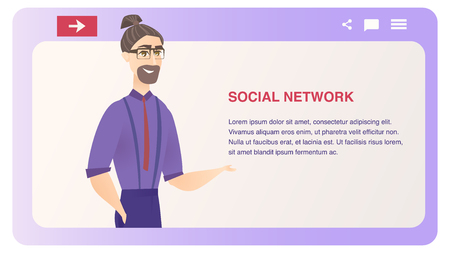Laying the Foundation: Define Your Brand and Audience
Why Your Brand Identity Matters in the U.S. Market
If you’re launching a startup in the United States, your social media journey starts with building a brand identity that truly stands out. American audiences value authenticity, clarity, and relatability. Before you even make your first post, it’s crucial to get clear on what your brand represents and how you want people to feel when they come across your content.
Steps to Craft a Compelling Brand Identity
| Step | What to Do | U.S. Culture Tip |
|---|---|---|
| 1. Clarify Your Mission | Write a simple statement about what your startup does and why it exists. | Keep it direct—Americans appreciate straight talk and purpose-driven brands. |
| 2. Choose Your Voice & Style | Decide if your tone will be friendly, professional, witty, or bold. | Match your tone to your target audience’s expectations; friendly and conversational often work well. |
| 3. Visual Branding | Select colors, fonts, and logos that reflect your values. | Bright, clean visuals tend to attract attention online in the U.S. |
| 4. Core Values | List 3-5 values that guide every decision you make. | Highlight values like innovation, inclusivity, or community—these resonate strongly in American culture. |
Pinpointing Your Ideal Customer Profile (ICP)
The more specific you are about who you want to reach, the easier it will be to create content that connects. Start by asking questions like:
- How old are they?
- What are their interests?
- Where do they hang out online?
- What problems do they face that my startup solves?
- What kind of language or humor do they relate to?
Create a Sample ICP Table
| Attribute | Description (Example) |
|---|---|
| Age Range | 25-35 years old |
| Main Interests | Sustainable living, tech gadgets, entrepreneurship |
| Favorite Platforms | Instagram, TikTok, LinkedIn |
| Pain Points | Lack of time for self-improvement, desire for eco-friendly solutions |
| Tone Preferences | Straightforward with a touch of humor |
Tapping Into American Trends and Values
The U.S. market is driven by trends—think memes, hashtags, and viral challenges—but it’s also influenced by broader values like diversity, innovation, and personal empowerment. When defining your brand and audience, keep these cultural touchpoints in mind so that every post feels relevant and timely. This way, you lay a strong foundation for going from zero followers to viral buzz.
2. Choosing the Right Platforms for U.S. Engagement
When youre building your startups social media presence in the U.S., picking the right platforms is key. Not every channel fits every business, and American audiences have clear favorites depending on their age, interests, and habits. Here’s how you can decide where to focus your efforts.
Understanding Popular Social Media Platforms in the U.S.
The U.S. social media landscape is diverse. Some platforms are great for reaching young people, while others work better for professionals or local communities. Let’s break down the most popular ones:
| Platform | Main Audience | Best For |
|---|---|---|
| 18-34, Visual-first users | Lifestyle brands, product showcases, influencers | |
| 25-54+, Families & communities | Local businesses, events, community engagement | |
| X (Twitter) | 18-49, News seekers & professionals | Real-time updates, customer service, trending topics |
| 25-54, Professionals & B2B | B2B startups, networking, recruiting talent | |
| TikTok | 16-24, Trendsetters & Gen Z | Viral content, brand awareness, creative campaigns |
| 25-44, DIYers & planners (mostly women) | E-commerce, lifestyle inspiration, visual storytelling |
Selecting the Best Channels for Your Startup
You don’t need to be everywhere at once. Think about your target customers and where they spend their time online. Here are a few tips to help you choose:
- Define Your Audience: Are they teens or working professionals? Parents or hobbyists?
- Consider Content Type: Do you have lots of photos and videos? Or is your value in sharing news and insights?
- Start Small: Focus on one or two platforms first so you don’t spread yourself too thin.
- Watch Your Competitors: See which channels similar startups use and what works for them.
- Stay Flexible: As you grow and learn more about your audience, adjust your platform choices.
Example: Matching Your Startup with a Platform
If you run a fashion e-commerce startup targeting Gen Z and Millennials, Instagram and TikTok should be your main focus since both thrive on visual and trendy content. If you’re building a B2B SaaS tool for small businesses, LinkedIn is likely your best starting point.
Your Next Steps:
Create business profiles on your chosen platforms and start posting content that speaks directly to your audience’s interests and needs. Remember: it’s not about being everywhere—it’s about being where it matters most!

3. Crafting Content That Connects and Converts
Understand Your U.S. Audience
Creating content that resonates with an American audience means understanding their interests, language, and cultural trends. Spend time exploring popular platforms like Instagram, TikTok, and X (formerly Twitter) to observe what’s trending in the U.S. Notice the humor, slang, and even the timing of posts. This will help you craft messages that feel genuine and relatable.
Tap Into U.S. Trends and Values
Americans love content that’s timely and taps into current events, pop culture moments, or national conversations. Stay updated with holidays like Fourth of July or Thanksgiving, sports events like the Super Bowl, and viral internet challenges. Reflecting values such as inclusivity, entrepreneurship, and positivity can also help your startup connect with local audiences.
Popular Content Types in the U.S.
| Content Type | Description | U.S. Example |
|---|---|---|
| Memes & GIFs | Funny, shareable visuals tied to current culture or trends | A meme about Monday mornings using a famous movie scene |
| Behind-the-Scenes | Authentic glimpses into your startup’s daily life | Short video tour of your workspace or team brainstorming session |
| User-Generated Content | Sharing customers’ photos or testimonials with permission | A happy customer using your product at a local event |
| How-To Videos | Step-by-step guides or tips related to your product/service | A quick hack for using your app more efficiently |
| Polls & Questions | Interactive stories or posts that invite opinions or feedback | “Which logo do you like best?” poll on Instagram Stories |
Create Authentic and Shareable Posts
The most successful U.S. social media brands speak with a voice that feels real—not overly polished or robotic. Use plain English, emojis (where appropriate), and address your followers directly. Encourage sharing by making content funny, useful, or inspiring. Always add clear calls-to-action, whether it’s “Tag a friend who needs this!” or “Tell us your story below.”
Tips for Higher Engagement:
- Use Visuals: Bright images and short videos catch attention fast.
- Keep It Short: Americans scroll quickly; get to the point early.
- Cater to Mobile: Most users are on their phones—design for small screens.
- Add Hashtags: Join trending conversations to boost visibility (but don’t overdo it).
- Respond Quickly: Reply to comments and messages to build trust.
Monitor What Works—and Pivot Fast!
The key to going viral is testing different types of content and tracking what gets shared or liked most. Use analytics tools built into platforms like Instagram Insights or Facebook Analytics to see which posts perform best with your U.S. audience. Don’t be afraid to try new formats—if something flops, move on quickly and keep experimenting until you find your viral formula.
4. Growth Hacks: Building Momentum and Going Viral
Unlocking Rapid Growth on Social Media
Taking your U.S. startup from zero to viral isn’t just about posting great content—it’s about working smarter with proven strategies that help you gain traction fast. Here’s how you can increase your followers, tap into the power of influencers, and ride viral trends to build a buzzing social media presence.
Growth Hacks for Increasing Followers
| Strategy | Description | Example |
|---|---|---|
| Host Giveaways | Encourage users to follow, like, and tag friends to enter a contest. | “Follow us and tag two friends for a chance to win our latest product!” |
| User-Generated Content | Ask followers to share their own photos or stories using your product and tag your account. | #MyStartupStory campaign where users post with your hashtag for a feature. |
| Consistent Posting Schedule | Post regularly at optimal times for U.S. audiences (think mornings and evenings). | Share a new tip every Monday and Thursday at 8 AM PST. |
| Engage Actively | Reply to comments, DMs, and mention followers in Stories or posts. | Acknowledge top fans by featuring them on your page. |
Leveraging Influencers the Right Way
Micro vs. Macro Influencers
You don’t need a celebrity to go viral. Micro-influencers (10K–100K followers) often have higher engagement rates and feel more authentic. Reach out with personalized messages, offer free products, or create affiliate deals that reward both sides.
| Influencer Type | Best For | Typical Cost |
|---|---|---|
| Micro-Influencer | Niche targeting, local buzz | $50–$500/post |
| Macro-Influencer | Bigger reach, brand awareness campaigns | $1,000+/post |
Tips for Collaborating:
- Select influencers whose audience matches your ideal customer profile.
- Create co-branded content that feels natural and fun.
- Track performance with unique discount codes or links.
Capitalizing on Viral Trends Fast
The internet moves quickly! Stay on top of trending memes, challenges, and hashtags by setting up Google Alerts or using tools like TrendTok Analytics. When you spot something relevant, jump in early—put your own spin on it that fits your brand’s voice and values.
- TikTok Challenges: Participate in (or create) challenges that fit your product or service. Show off real people using what you offer!
- Meme Marketing: Use popular meme formats with captions related to startup life or your industry—humor is huge in the U.S. market.
- Reactive Content: Respond quickly to news or pop culture moments (like major sports events or award shows) with witty posts or Stories.
Your Growth Playbook in Action:
| Tactic | Goal | How-To Example |
|---|---|---|
| Giveaway with Influencer Partner | Burst of new followers & engagement | An influencer announces a joint giveaway requiring follows & tags |
| Meme-Based Product Post | Create shareable content that spreads organically | Edit a trending meme template with your startups twist (“When your app finally loads…”) |
| User Story Feature Fridays | Loyalty & community building | Share customers’ stories every Friday; tag them for extra reach |
The key is consistency—keep testing new hacks, measure what works best for your audience, and don’t be afraid to have some fun along the way!
5. Measuring Success and Iterating for Impact
Understanding Key Metrics for U.S. Startups
If you want your startup to go from zero to viral in the U.S., it’s not enough to just post and hope for the best. You need to know what’s working—and what’s not—by tracking the right numbers. Here are some core metrics every American startup should keep an eye on:
| Metric | What It Means | Why It Matters |
|---|---|---|
| Reach | The number of unique users who see your content | Shows how far your message is spreading |
| Engagement Rate | Likes, comments, shares, and saves divided by total followers or impressions | Reveals how interesting or relevant your posts are |
| Follower Growth | The increase (or decrease) in your audience over time | Indicates if your brand is gaining traction |
| Click-Through Rate (CTR) | The percentage of people who click on a link in your post or bio | Shows if your call-to-action resonates with users |
| Conversion Rate | The number of users taking a desired action (like signing up or making a purchase) | Ties social media efforts directly to business goals |
| Share of Voice | Your brand’s mentions compared to competitors | Helps you see how you stack up in the market conversation |
Analytics Tools You Should Use
Don’t worry—you don’t have to track all this manually. There are plenty of tools designed for startups looking to make it big in the U.S. market:
- Native Platform Analytics: Instagram Insights, Facebook Page Insights, Twitter Analytics, TikTok Analytics—all provide basic data about reach, engagement, and more.
- Google Analytics: Connects website traffic with your social media efforts.
- Social Media Dashboards: Tools like Hootsuite, Sprout Social, or Buffer let you monitor multiple channels at once and spot trends quickly.
- Brand Monitoring Tools: Try Mention or Brand24 to track what people are saying about your startup across the web.
Using Feedback Loops to Refine Your Approach
The most successful U.S. startups don’t just collect data—they use it! Here’s how you can create a feedback loop for continuous improvement:
- Track Your Metrics Regularly: Set aside time each week or month to review analytics and compare against your goals.
- Listen to Your Audience: Pay attention to comments, DMs, reviews, and community conversations for direct feedback.
- A/B Test Content: Experiment with different formats, posting times, and messages to see what works best.
- Pivot When Needed: Don’t be afraid to change direction based on what the numbers (and people) are telling you.
- Sustain Growth: Use insights from your data and feedback to plan campaigns that build on past successes—keeping momentum going strong!
Your Roadmap for Going Viral in the U.S.
No matter where you start, measuring success and iterating is how you’ll keep growing. With clear metrics, smart tools, and a willingness to adapt based on real feedback, your U.S. startup will be set up for lasting impact—and maybe even viral fame.


